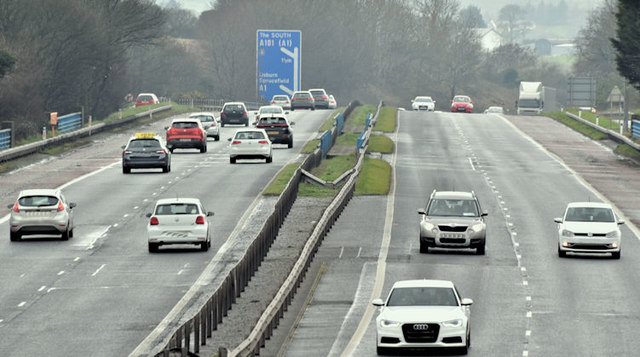

With a surge in population and industrial development in all sectors, economic growth has been at an all-time high for India. And it is because of this rapid progress that India, especially the urban locale, has been witness to an increased number of automobiles ferrying around. And since management of these vehicles, and the roads, posed a huge problem for the authorities, the concept of Intelligent Transportation System (ITS) came into being.
In this article, we talk about what Intelligent Transportation System is, its functioning and classification and the current scenario, in terms of implementation and regulation, on the roads of India.
What is an Intelligent Transportation System?
Intelligent Transportation System (ITS) is a technique devised to manage and regulate all problems related to traffic and locomotion in India. The idea behind this system is to utilize information technology to enhance traffic management, be more mindful of the environment and scale down on time spent in commuting. The ITS cycle works in the following manner: relevant data is collected, then analysed and finally, the results of the analysis are implemented on all aspects pertaining to traffic management and regulation.
Get LocoNav’s Government Approved AIS 140 Devices at Best Price!
Contrary to popular belief, Intelligent Transportation Systems are not limited to roadways; they can also be successfully appointed for air transportation, water transportation and the railways as well.
For every system devised to improve the efficiency of any sector, it is important that certain segregations are made, where each functionality of the system is strictly allocated to enhance a particular segment. The same principle applies to ITS, which is classified on the basis of the vehicle in the picture and the infrastructure.
Applications of Intelligent Transport Systems
In a broader sense, the classification of Intelligent Transportation Systems, on the basis of the applications, are as follows:
- Advanced Traffic Management System (ATMS)
- Advanced Traveller Information System (ATIS)
- Advanced Vehicle Control System (AVCS)
- Advanced Public Transportation System (APTS)
- Advanced Rural Transportation System (ARTS)
- Advanced Commercial Vehicles Operations System (ACVOS)
The key components that form the entire ecosystem of an ITS include sensors, a communication channel, a processing unit, GPS notification and traffic prioritization signals. Implementing ITS in India has been doing the rounds for quite some time now. Finally, Automotive Industry Standard 140 (AIS-140) came into being that incorporates ITS to change the scope of transportation throughout India.
Also read: AIS 140 Notification: A Timeline
Also read: The Boon of NHAI FASTag
Working of an Intelligent Transportation System
The functionality of an Intelligent Transportation System begins with the core entity, that is, the Traffic Management Centre. The centre has been designed to handle the technical administration that comes in the working of ITS. Here, the data collection and subsequent analysis take place, which is then implemented in real-time to control and manage traffic. The components that ensure the working of the TMC include:
- Collection of Data: Data collection is one of the key components for the optimum functioning of the ITS. Information such as traffic volume, traffic speed, time, location, vehicle monitoring, etc. is gathered in this step. The data is accumulated with the help of hardware components such as automated vehicle identifiers, GPS sensors, vehicle tracking systems, surveillance cameras etc. The data is then transmitted to centralized servers, where it is plucked in order to perform the necessary analysis.
- Channelling of Data: The flow of transmission of data begins from data collected from the roads to the TMC server for analysis, and then finally the analysed data to the end-user, which could be the transportation authority to the actual travellers and commuters.
- Analysis of Data: Data analysis stems from filtering of data to get rid of any errors, then another round of thorough data cleaning. The information then procured is then fed into specialized software that is crucial in determining traffic-related forecasts, and other information that can be deemed useful for the commuters.
Another key component that is a part of the Intelligent Transportation Systems is relaying the aforementioned data to the user. This is taken care of by the Travel Advisory System (TAS). The TAS works in an online and offline mode, delivering information to the user via signs, direct SMS alerts, public radio broadcasts and much more.
Intelligent Transportation System in India: The Current Status
Ideas around Intelligent Transportation Systems have been in the pipeline for many cities across India, primarily for the metro cities. However, each endeavour mostly utilized only certain aspects of ITS, not implementing it in its entirety. While some projects were an intermediate success, many failed to create a significant impact. Lack of proper implementation, regulation and compliance with the law were some of the major contributing factors to these versions of ITS not working out.
One of the successful ITS implementation that the ARAI came up with was AIS-140. Along with that, optimizing toll collection booths to go cashless, with the help of RFID tags, also falls in the bracket of ITS, and has been a well-performing initiative.
Quick read: Advantages of Using FASTag in the Indian Transportation Industry
Quick read: AIS 140 Set To Revamp the Indian Transport Sector
Download LocoNav App: Check RTO Vehicle Details